
You’ve read and heard about the rise of podcasts and how one should delve into them to increase brand awareness.
Plus, the numbers say it all. As of April 2021, there are 48 million podcast episodes and over 2 million active shows.
Everyone is doing it, so why shouldn’t you?
Convinced by this strategy, you mustered the courage to record your first podcast and upload it on various podcast streaming platforms.
Week after week, your podcast downloads are increasing. People are talking about it on social media. All of these are good signs.
But it’s still not up to your expectations. Wasn’t it supposed to go viral and rake in more subscribers and listens?
What went wrong, you might ask. It doesn’t have to be that way, and there’s a solution.
It’s repurposing podcast content.
The more you can repurpose your podcast content and distribute them, the more you’re putting your podcast out there to reach more listeners and subscribers.
This guide will walk you through how to repurpose podcast content with tips and tools we’ve tried and tested at Piktochart.
Let’s get rolling.
Effortlessly export your Google Docs to WordPress with just 1-click.
Get Started Today
The right question isn’t why, but it’s why not.
The benefits are aplenty.
For a start, if your goal is to grow the reach of your podcast through distribution, then repurposing your content is perhaps the simplest way to leverage your existing content.
One of the mistakes that podcasters often fall into is the idea that the more, the better.
The same rule applies to every content creator or anyone who oversees content production. There is no doubt that quantity is a crucial metric, but distributing and promoting your content is equally or, if not more, important.
By repurposing your podcast content, you can also take away the added stress and pressure of constantly creating engaging content.
Not all of your podcast subscribers will be able to keep up with the number of podcast episodes you are releasing every day or week.
In an age of information overload, brands are battling with each other to win their audience’s attention. Viral videos and other spectacles also surround us in every direction – competing for our time, attention, and money.
For these reasons, if your marketing strategy is to primarily grow the reach of your podcast, recycling and repurposing your podcast through short video snippets, visuals, and other formats can help increase distribution and maintain your publishing frequency.
Finally, content repurposing also saves you money if you’re on a tight budget. You’re simply leveraging your existing content by making it more accessible.
The more you can repurpose and distribute as a podcaster or content creator, the better.
Let’s say you’ve released 100 existing podcast episodes and decided to repurpose every one of them for three months. As a result, you did not have the chance to promote any new episodes throughout that period.
This is not entirely the intent of content repurposing. Instead, repurposing requires a strategic approach to help your marketing strategy.
The last impression you want to leave with your subscribers is of a spammer overselling their content.
One fundamental guiding principle to ask is — which episodes do your subscribers enjoy the most?
Dig into the analytics of your podcast and find out the top-performing episodes with the most listens or views.
Depending on the platform you use to publish and distribute your podcast, you can easily find this data on your account’s dashboard.
From here, you already have an idea of what your subscribers enjoy the most, so leverage this data to your advantage. Make a list of these episodes that you can repurpose as part of your marketing strategy.
The repurposing effort doesn’t have to be done daily, but the frequency should be moderate enough to still draw their attention. This is an effective way to keep your podcast content relevant to your subscribers.
Pro tip: With this valuable data, you can also think about creating similar content for future episodes. For example, if your top-performing podcast episode is ’10 Marketing Trends To Try In 2022′, you can replicate this in the following years with a similar angle.
Now that we have gone through the importance of repurposing and identifying which podcast content to repurpose, let’s move on to the practical side of things.
Here’s where the rubber meets the road.
One common mistake by podcasters is that they don’t do anything further with their content other than publishing their podcast to distribution platforms such as Anchor and Spotify.
Don’t just stop there!
There are still many potential subscribers out there who will consume your content and find it beneficial if you put it in the right places.
Whether it’s a podcast episode art cover showcasing the title and speaker or a visual quote by a podcast guest – these graphic assets will surely increase your engagement.
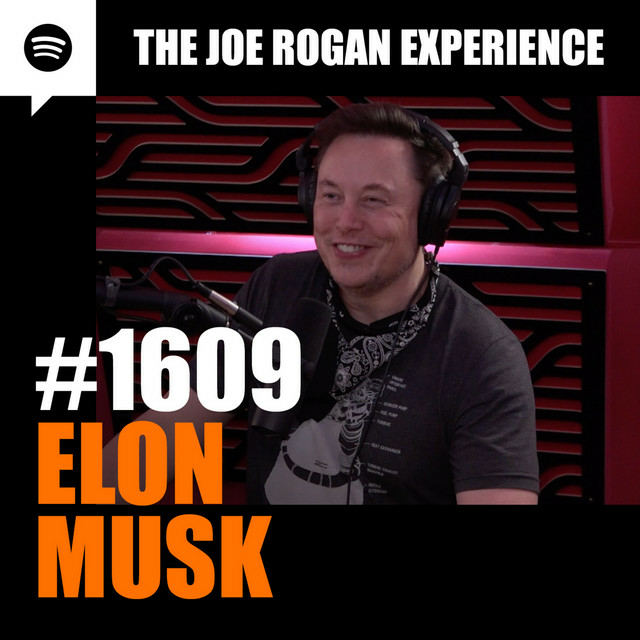
Essentially, you already have existing valuable content from your podcast episode, so why not put it to good use?
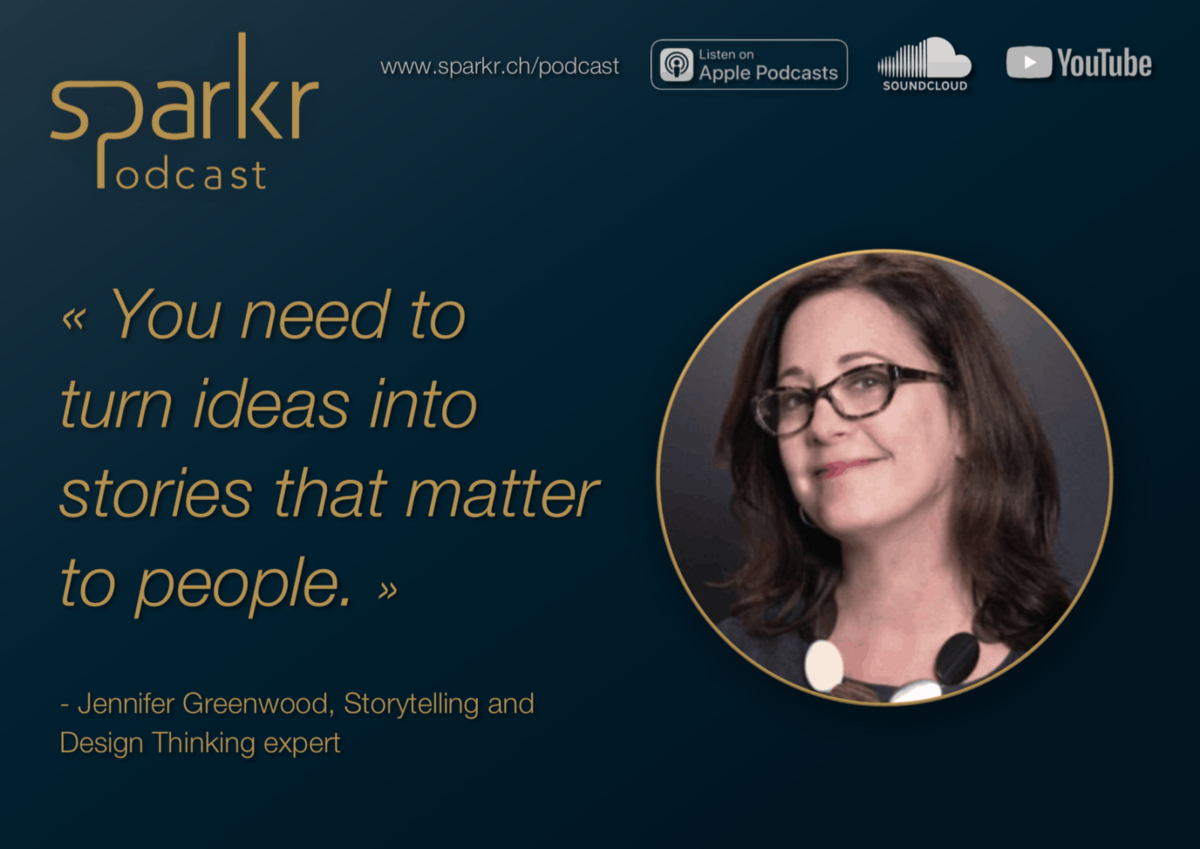
Repurposing podcast episodes into video clips almost always works because of its potential for virality on social media. This is backed by Piktochart’s survey in 2022, which discovered that 72.7 percent of respondents use video as a pillar in their marketing strategies.
While not everyone might spend 30 minutes listening to your podcast, they would spend 30 seconds watching a short video clip that catches their attention on Instagram or TikTok. and utilizing podcast editing software that also has video editing capabilities will make the repurposing all the more easier.
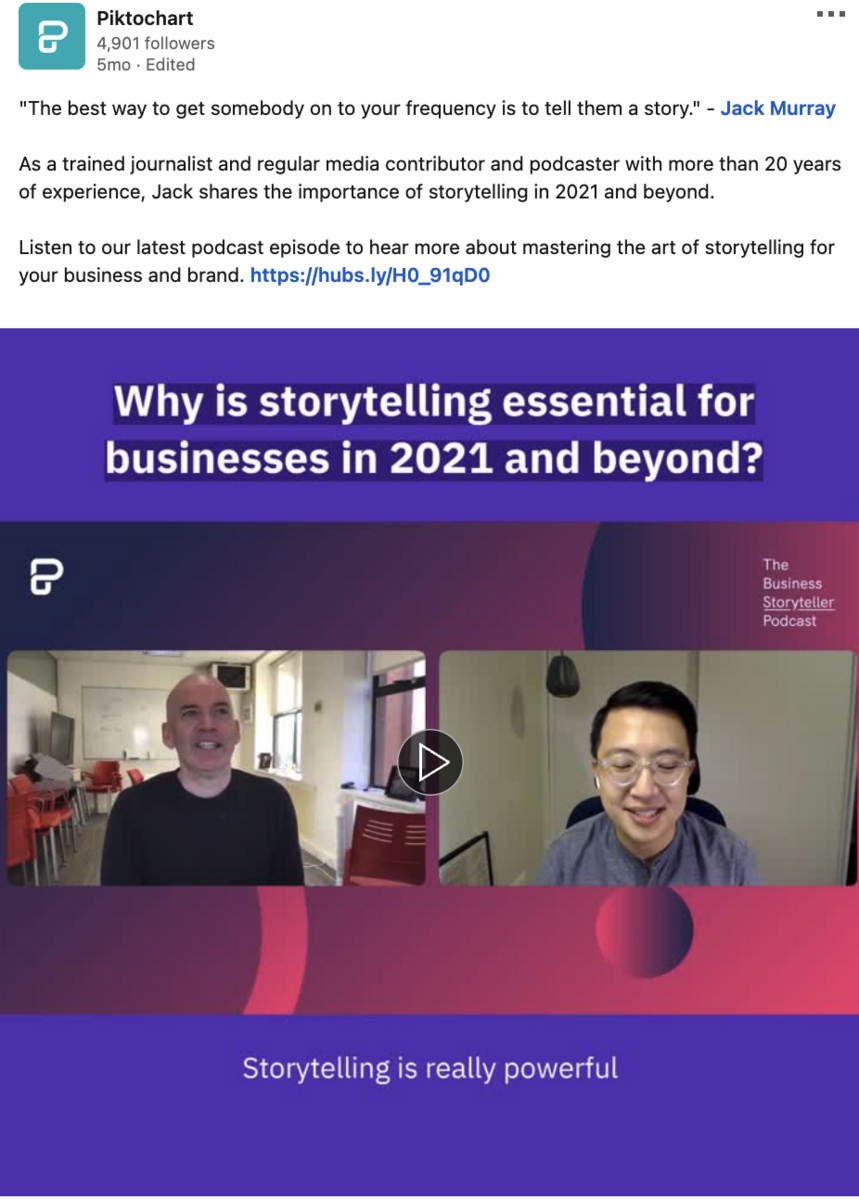
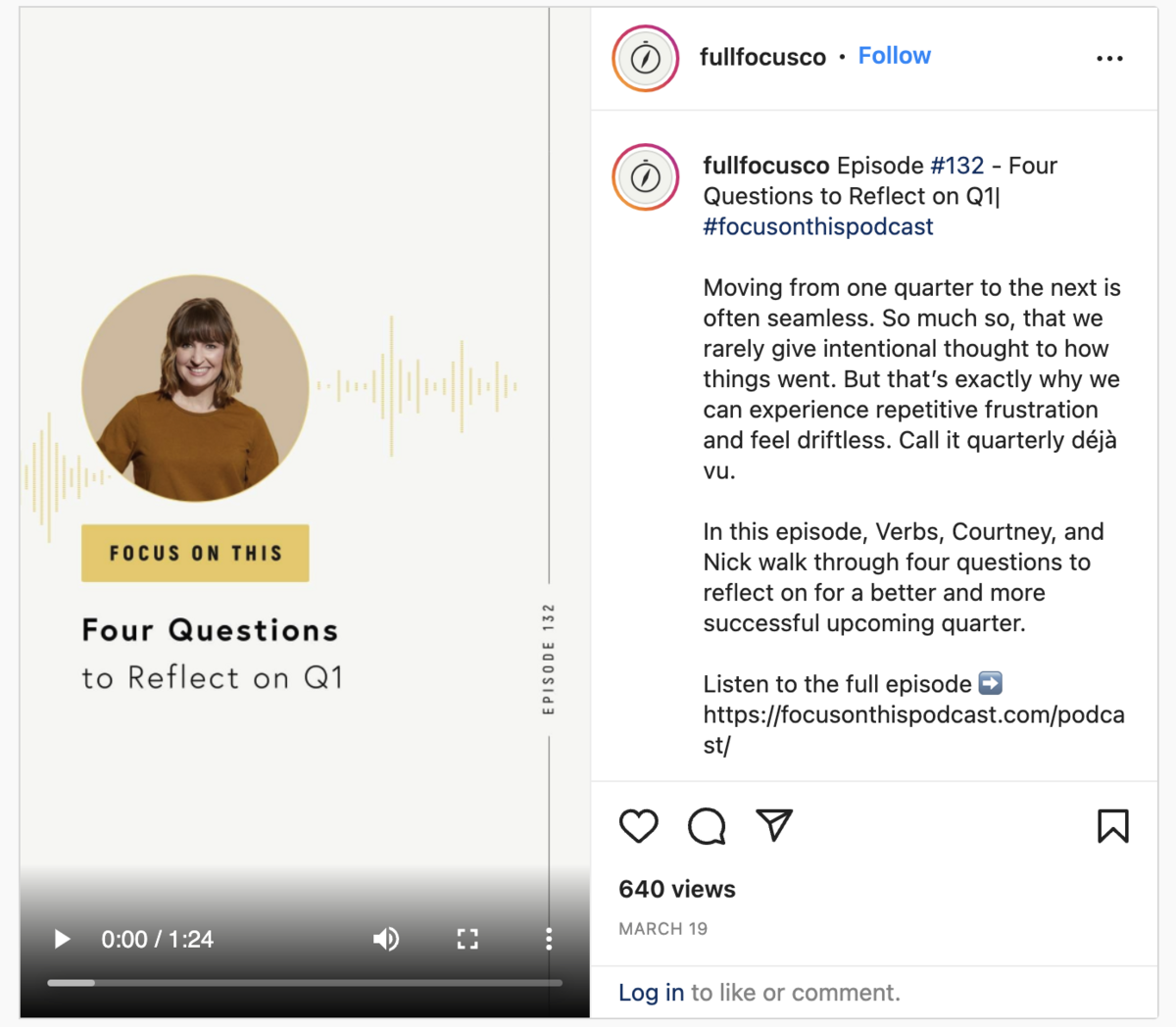
But what if your podcast recording is only done as audio?
Here’s when an audiogram can be used with a transcript to further engage your audience. You could also us text to video to convert transcribed text into video format if need be.
Live video streaming your podcast sessions creates real-time interaction with your audience, leading to a more engaging experience. This format can also be repurposed later as recorded content, broadening your reach even further.
These video clips, audiograms, and live streams can further increase your podcast’s exposure as they’re shared out there. Best of all, by using an online video maker, you don’t have to spend much to attract new subscribers.
Pro tip: We all have short attention spans, so keep your visual assets and video clips short and straightforward.
What about turning your podcast episode into a well-written blog post, which can be published either on your website or on social media posts. Aside from providing your listeners with a podcast listening experience, you can give them good reading material. This, among all, will increase your chances of ranking high in Google Search Results for your topic’s keywords. It would take you a few simple steps to do a repurpose magic. Upload your podcast’s audio file to Podcastle.ai, and choose the voice-to-text feature. The Ai-driven software will quickly give you a written script of your podcast. Further, with a few grammatical or styling edits, you can have ready written content for whichever digital channel you want.
Pro tip: We talk worse than we write. Don’t forget to carefully read your podcast’s text version to remove any filling words, repetitions, and similar.
Now that we’ve covered two ways of content repurposing with visual assets and video clips, we’ll show you how to easily create those with Piktochart, an all-in-one intuitive visual storytelling platform.
Let’s begin with repurposing podcast content into visual assets using Piktochart Visual.
You don’t have to be a designer to do this. With a visual content creator like Piktochart Visual, there are hundreds of pre-built and customizable templates to make your life easy.
Choose a template that suits your needs and customize it accordingly. All it takes is less than 3 minutes to have your visual asset ready!
For example, if you’re creating a podcast art cover, any templates with pre-built elements to promote an event would suit this use case.
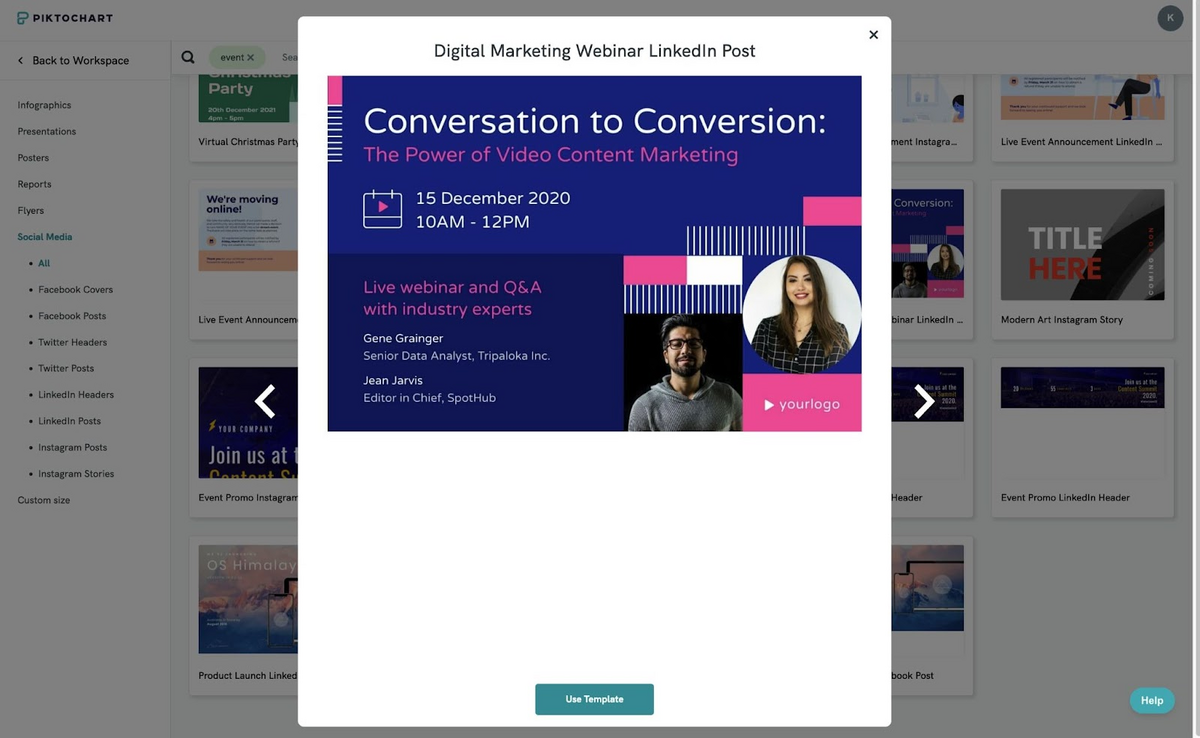
You can then easily customize the templates according to your podcast by editing the title and photo of the speaker – if you have a guest speaker. This will surely boost your event marketing efforts.
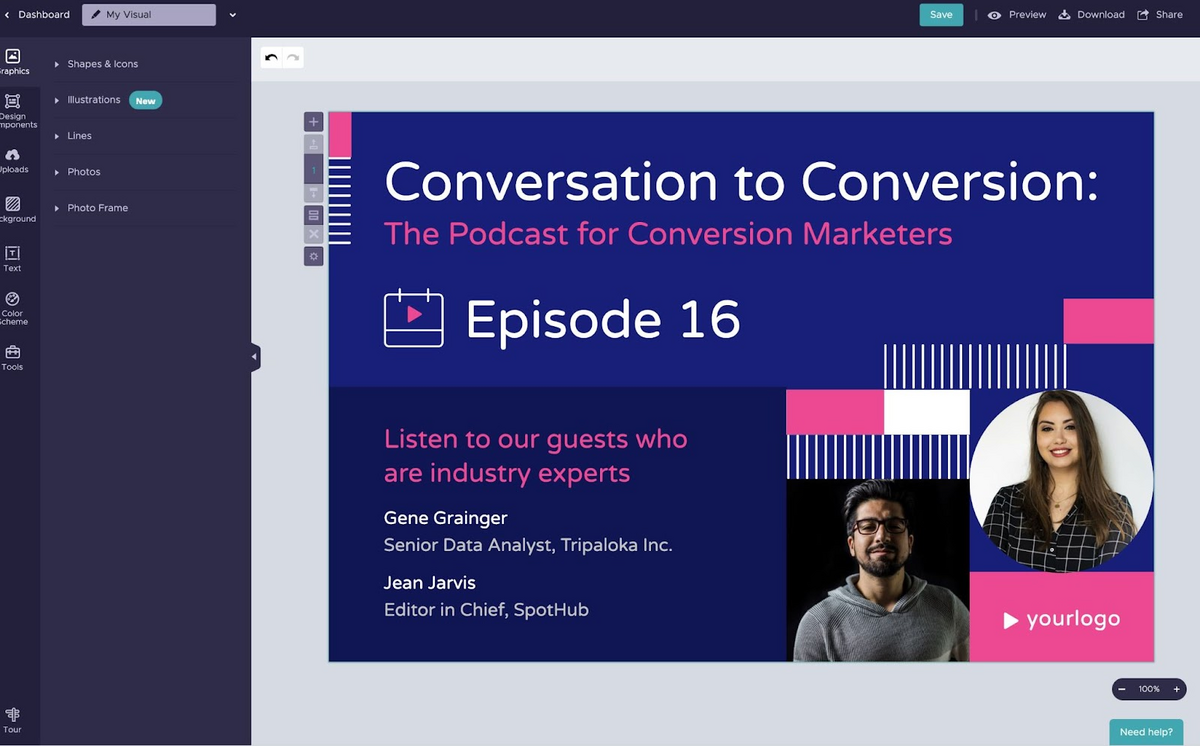
As another example, you can transform a takeaway from one of your podcast guests into a social media graphic or infographic.

Your next step is to create video clips from your podcast.
While knowledge in video editing used to be necessary years ago in creating video clips, there are many video editing tools these days to get the task done, like Piktochart Video.
Piktochart Video is a simple video editor to create social media videos and convert your videos to text.

All you need to do is upload your podcast video to Piktochart Video and your video will be automatically transcribed for you.
The short video tutorial below shows you how.
Tada, you now have a video clip from your podcast that is ready to be shared!
PS: You can even hire a transcriber for this purpose.
You don’t have to be a graphic design pro or video editor to get started with repurposing your podcast content.
You can accomplish your podcast content repurposing goals with a single intuitive platform like Piktochart. Experience the power of a visual content creator and video editor in one tool. There is no need to download any software since you can edit right in your browser.
With a good system for identifying the right podcast content to repurpose and a bit of creativity, you’ll be on your way to reaching more podcast listeners and subscribers.